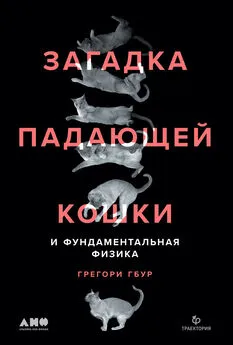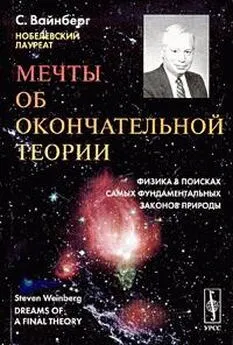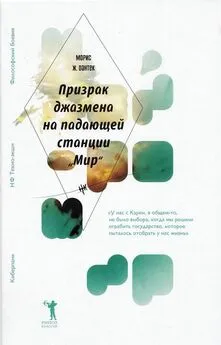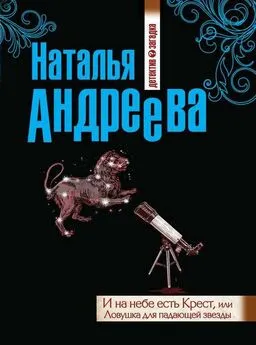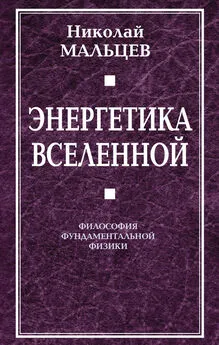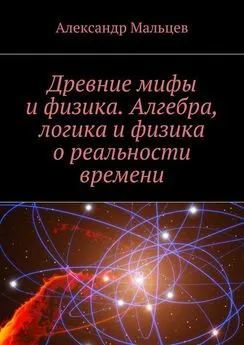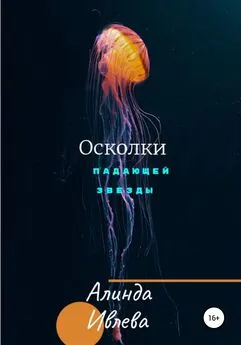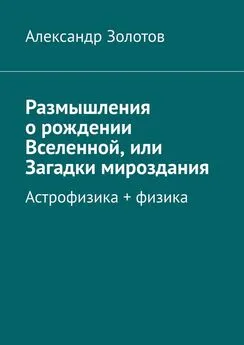Грегори Гбур - Загадка падающей кошки и фундаментальная физика
- Название:Загадка падающей кошки и фундаментальная физика
- Автор:
- Жанр:
- Издательство:Альпина нон-фикшн
- Год:2021
- Город:Москва
- ISBN:978-5-0013-9363-4
- Рейтинг:
- Избранное:Добавить в избранное
-
Отзывы:
-
Ваша оценка:
Грегори Гбур - Загадка падающей кошки и фундаментальная физика краткое содержание
В своей увлекательной и остроумной книге физик и заядлый кошатник Грегори Гбур показывает, как попытки понять механику падения кошек помогли разобраться в самых разных задачах в математике, физике, физиологии, неврологии и космической биологии, способствовали развитию фотографии и кинематографа и оказали влияние даже на робототехнику.
Поиск ответа на загадку падающей кошки погружает читателей в увлекательный мир науки, из которого они узнают решение головоломки, но также обнаружат, что феномен кошачьего выверта по-прежнему вызывает горячие споры ученых.
Автор убежден, что чем больше мы исследуем поведение этих животных, тем больше сюрпризов они нам преподносят.
Загадка падающей кошки и фундаментальная физика - читать онлайн бесплатно ознакомительный отрывок
Интервал:
Закладка:
McDonald, D. A. «The Righting Movements of the Freely Falling Cat (Filmed at 1500 f.p.s.).» Journal of Physiology — Paris, 129:34–35, 1955.
Mead, C. A., and D. G. Truhlar. «On the Determination of Born-Oppenheimer Nuclear Motion Wave Functions Including Complications due to Conical Intersections and Identical Nuclei». Journal of Chemical Physics, 70:2284–2296, 1979.
Merbl, Y., J. Milgram, Y. Moed, U. Bibring, D. Peery, and I. Aroch. «Epidemiological, Clinical and Hematological Findings in Feline High Rise Syndrome in Israel: A Retrospective Case-Controlled Study of 107 Cats». Israel Journal of Veterinary Medicine, 68:28–37, 2013.
Montgomery, R. «Gauge Theory of the Falling Cat». Fields Institute Communications, 1:193–218, 1993.
Mpemba, E. B., and D. G. Osborne. «Cool?» Physics Education, 4:172–175, 1969.
Muller, H. R., and L. H. Weed. «Notes on the Falling Reflex of Cats». American Journal of Physiology, 40:373–379, 1916.
Muybridge, E. «Photographies instantanées des animaux en mouvement». La Nature, 1st semester:246, 1879.
Nadar, P. «Le nouveau president». Paris Photographe, 4:3–9, No. 1, 1894.
Newcomb, S. «On the Dynamics of the Earth’s Rotation, with Respect to the Periodic Variations of Latitude». Monthly Notices of the Royal Astronomical Society, pages 336–341, 1892.
Ньютон И. Математические начала натуральной философии. — М.: Наука, 1989.
Noel, A., and D. L. Hu. «Cats Use Hollow Papillae to Wick Saliva into Fur». PNAS , 115:12377–12382, 2018.
«Notes on Some Points Connected with the Progress of Astronomy during the Past Year». Monthly Notices of the Royal Astronomical Society, 53:295, 1893.
O’Leary, D. P., and M. J. Ravasio. «Simulation of Vestibular Semicircular Canal Responses during Righting Movements of a Freely Falling Cat». Biological Cybernetics, 50:1–7, 1984.
Ouellette, J. «When Cold Warms Faster Than Hot». Physics World, December 2017.
Pancharatnam, S. «Generalized Theory of Interference, and Its Applications». Proceedings of the Indian Academy of Sciences A, 44:247, 1956.
Papazoglou, L. G., A. D. Galatos, M. N. Patsikas, I. Savas, L. Leontides, M. Trifonidou, and M. Karayianopoulou. «High-Rise Syndrome in Cats: 207 Cases (1988–1998).» Australian Veterinary Practitioner, 31:98–102, 2001.
«Par-ci, par-là». La Joie de la Maison, 202:706, 1894.
Parent, A. «Sur les corps qui nagent dans des liqueurs». Hi toire de l’Academie Royale, pages 154–160, 1700.
Peano, G. «Il principio delle aree e la storia d’un gatto». Rivista di Matematica, 5:31–32, 1895.
Peano, G. «Sopra la spostamento del polo sulla terra». Atti della Reale Accademia delle scienze di Torino, 30:515–523, 1895.
Peano, G. «Sul moto del polo terrestre». Atti dell’Accademia Nazionale dei Lincei, 5:163–168, 1896.
Peano, G. «Sul moto del polo terrestre». Atti della Reale Accademia delle scienze di Torino, 30:845–852, 1895.
Peano, G. «Sul moto di un sistema nel quale sussistono moti interni variabili». Atti dell’Accademia Nazionale dei Lincei, 4:280–282, 1895.
Peano, G. «Sur une courbe, qui remplit route une aire plane». Mathematische Annalen, 36:157–160, 1890.
«Perpetual Motion». Modern Medical Science (and the Sanitary Era), 10:182, 1897.
«Philosophy and Common Sense». Monthly Religious Magazine, 29–30:298, 1863.
«Photographs of a Tumbling Cat». Nature, 51:80–81, 1849.
Pope, M. T., and G. Niemeyer. «Falling with Style: Sticking the Landing by Controlling Spin during Ballistic Flight». In IEEE/RSJ International Conference on Intelligent Robots and Systems, pages 3223–3230, 2017.
Potonniée, G. The History of the Discovery of Photography. Tennant and Ward, New York, 1936.
Putterman, E., and O. Raz. «The Square Cat». American Journal of Physics, 76:1040–1044, 2008.
Quitard, P. M. Dictionnaire Étymologique, Historique et Anecdotique des Proverbes. P. Pertrand, Paris, 1839.
Rademaker, G. G. J., and J. W. G. ter Braak. «Das Umdrehen der fallenden Katze in der Luft». Acta Oto-Laryngologica, 23:313–343, 1935.
Rankine, W. J. M. Manual of Applied Mechanics. Griffin, London, 1858.
Reis, P. M, S. Jung, J. M. Aristoff, and R. Stocker. «How Cats Lap: Water Uptake by Felis catus». Science, 330:1231–1234, 2010.
Renner, E. Pinhole Photography. Focal Press, Boston, 2nd edition, 2000.
Robe, T. R., and T. R. Kane. «Dynamics of an Elastic Satellite — I». International Journal of Solids and Structures, 3:333–352, 1967.
Robinson, G. W. «The High Rise Trauma Syndrome in Cats». Feline Practice, 6:40–43, 1976.
Ross, C. H. The Book of Cats. Griffith and Farran, London, 1893.
Routh, E. J. The Elementary Part of Treatise on the Dynamics of a System of Rigid Bodies. Macmillan, London, 1897.
Sadati, S. M. H., and A. Meghdari. «Singularity-Free Planning for a Robot Cat Freefall with Control Delay: Role of Limbs and Tail». In 8th International Conference on Mechanical and Aerospace Engineering, pages 215–221, 2017.
Schock, G. J. D. «A Study of Animal Reflexes during Exposure to Subgravity and Weightlessness». Aerospace Medicine, 32:336–340, 1961.
Schrödinger, E. The Present Situation in Quantum Mechanics. Princeton University Press, Princeton, NJ, 1983. Translated reprint of original paper.
Seabrook, W. Doctor Wood, Modern Wizard of the Laboratory. Harcourt, Brace, New York, 1941.
Sherrington, C. S. Inhibition as a Coordinative Factor. Elsevier, Amsterdam, 1965.
Sherrington, C. S. The Integrative Action of the Nervous System. Charles Scribner’s Sons, New York, 1906.
Sherrington, C. S. «Note on the Knee-Jerk and the Correlation of Action of Antagonistic Muscles». Proceedings of the Royal Society of London, 52:556–564, 1893.
Sherrington, C. S. «On Reciprocal Innervation of Antagonistic Muscles». Third note. Proceedings of the Royal Society of London, 60:414–417, 1896.
Shield, S., C. Fisher, and A. Patel. «A Spider-Inspired Dragline Enables Aerial Pitch Righting in a Mobile Robot». In IEEE/RSJ International Conference on Intelligent Robots and Systems, pages 319–324, 2015. Online.
Shields, B., W. S. P. Robertson, N. Redmond, R. Jobson, R. Visser, Z. Prime, and B. Cazzolato. «Falling Cat Robot Lands on Its Feet». In Proceedings of Australasian Conference on Robotics and Automation, 2–4 Dec 2013, 2013.
Skarda, E. «Cat Survives 19-Story Fall by Gliding L ke a Flying Squirrel». Time Magazine, March 22, 2012. Online.
Smith, P. G., and T. R. Kane. «On the Dynamics of the Human Body in Free Fall». Journal of Applied Mechanics, 35:167–168, 1968.
Solnit, R. River of Shadows. Pengu Books, New York, 2003.
Stables, W. G. «Cats»: Their Points and Characteristics, with Curiosities of Cat Life, and a Chapter on Feline Ailments. Dean and Son, London, 1874.
Stables, W. G. From loughshare to Pulpit: A Tale of the Battle of Life. James Nisbet, London, 1895.
«The Steam Man». Scientific American, 68:233, 1893.
Stepantsov, V., A. Eremin, and S. Alekperov. «Maneuvering in Free Space». NASA TT F-9883, 1966.
Stokes, G. G. Memoir and Scientific Correspondence. Cambridge University Press, Cambridge, 1907.
Stratton, J. A. «Harold Eugene Edgerton (April 6, 1903 — January 4, 1990).» Proceedings of the American Philosophical Society, 135:444–450, 1991.
Studnicka, F., J. Slegr, and D. Stegner. «Free Fall of a Cat — Freshman Physics Exercise». European Journal of Physics, 37:045002, 2016.
Tait, P. G. «Clerk-Maxwell’s Scientific Work». Nature, 21:317–321, 1880.
Takagi, S., M. Arahori, H. Chijiiwa, M. Tsuzuki, Y. Hataji, and K. Fujita. «There’s No Ball without Noise: Cats’ Prediction of an Object from Noise». Animal Cognition, 19:1043–1047, 2016.
Teitel, A. S. Breaking the Chains of Gravity. Bloomsbury Sigma, New York, 2016.
Tesla: Master of Lightning, PBS, website materials on Life and Legacy, http://www.pbs.org/tesla/ll/story_youth.html.
Thompson, G. «Spiders and the Electric Light». Science, 9:92, 1887.
Thone, F. «Right Side Up». Science News-Letter, 25:90–91, 1934.
Tomson, G. R. Concerning Cats: A Book of Poems by Many Authors. Frederick A. Stokes, New York, 1892.
Toulouse, E. «Nécrologie — Marey». Revue Scientifique, 5:673–675, T. 1 1904.
Triantafyllou, M. S., and G. S. Triantafyllou. «An Efficient Swimming Machine». Scientific American, 272:64–70, March 1995.
Vandiver, J. K., and P. Kennedy. «Harold Eugene Edgerton (1903–1990).» Biographical Memoirs, 86:1–23, 2005.
Verbiest, H. «In Memoriam Prof. Dr. G. G. J. Rademaker». Nederlands Tijdschrift voor Geneeskunde, 101:849–851, 1957.
Vincent, J. F. V., O. A. Bogatyreva, N. R. Bogatyrev, A. Bowyer, and A-K. Pahl. «Biomimetics: Its Practice and Theory». Journal of the Royal Society Interface, 3:471–482, 2006.
Vnuk, D., B. Pirkic, D. Maticic, B. Radisic, M. Stejskal, T. Babic, M. Kreszinger, and N. Lemo. «Feline High-Rise Syndrome: 119 Cases (1998–2001).» Journal of Feline Medicine and Surgery, 6:305–312, 2004.
Volterra, V. «Il Presidente Brioschi dà comunicazione della seguente lettera, ricevuta dal Corrispondente V. Volterra». Atti dell’Accademia Nazionale dei Lincei, 5:4–7, 1896.
Volterra, V. «Osservazioni sulla mia Nota: ‘Sui moti periodici del polo terrestre.’» Atti della Reale Accademia delle scienze di Torino, 30:817–820, 1895.
Volterra, V. «Sui moti periodici del polo terrestre». Atti della Reale Accademia delle scienze di Torino, 30:547–561, 1895.
Volterra, V. «Sulla rotazione di un corpo in cui esistono sistemi ciclici». Atti dell’Accademia Nazionale dei Lincei, 4:93–97, 1895.
Volterra, V. «Sulla teoria dei moti del polo nella ipotesi della plasticità terrestre». Atti della Reale Accademia delle scienze di Torino, 30:729–743, 1895.
Volterra, V. «Sulla teoria dei moti del polo terrestre». Atti della Reale Accademia delle scienze di Torino, 30:301–306, 1895.
Volterra, V. «Sulla teoria dei movimenti del polo terrestre». Astronomische Nachrichten, 138:33–52, 1895.
Volterra, V. «Sul moto di un sistema nel quale sussistono moti interni variabili». Atti dell’Accademia Nazionale dei Lincei, 4:107–110, 1895.
von Beckh, H. J. A. «Experiments with Animals and Human Subjects under Sub and Zero-Gravity Conditions during the Dive and Parabolic Flight». Journal of Aviation Medicine, 25:235–241, 1954.
Wagstaff, K. «Purr-plexed? Cats Teach a Robot How to Land on Its Feet». Today, October 14, 2016. Online.
Walker, C., C. J. Vierck Jr., and L. A. Ritz. «Balance n the Cat: Role of the Tail and Effects of Sacrocaudal Transection». Behavioural Brain Research, 91:41–47, 1998.
Walter, W. G. «An Imitation of Le». Sc e tific American, pages 42–45, May 1950.
Weber, R. L. More Random Walks Science. Taylor and Francis, New York, 1982.
Читать дальшеИнтервал:
Закладка:
